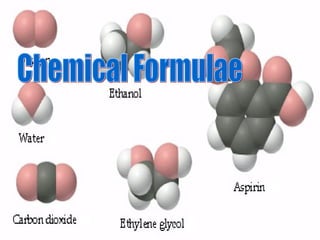Ion Formation
Ion formation is a foundational process in chemistry that profoundly influences the behavior of matter. It involves the transformation of neutral atoms into charged particles known as ions through the gain or loss of electrons. This process is pivotal in understanding various chemical reactions, the formation of compounds, and the behavior of substances in solution.
The Ion
An ion is an atom or molecule that carries a net electric charge due to the unequal number of protons and electrons. There are two primary types of ions:
1. Cations: Cations are positively charged ions formed when atoms lose one or more electrons. For example, when a sodium atom (Na) loses one electron, it forms a sodium cation (\(Na^+\)). The loss of electrons leads to an excess of protons, resulting in a positive charge.
Example: Sodium atom loses one electron to form \(Na^+\):
\[ Na \rightarrow Na^+ + e^- \]
2. Anions: Anions are negatively charged ions formed when atoms gain one or more electrons. For instance, when a chlorine atom (Cl) gains one electron, it forms a chloride anion (\(Cl^-\)). The gain of electrons results in an excess of negative charge.
Example: Chlorine atom gains one electron to form \(Cl^-\):
\[ Cl + e^- \rightarrow Cl^- \]
Electron Transfer During Chemical Reactions:
In chemical reactions, electron transfer plays a central role in the formation of ions. This transfer can occur through various mechanisms:
- Ionic Bonding: Ionic bonding involves the transfer of electrons from one atom to another to achieve stable electron configurations. For instance, in the formation of sodium chloride (NaCl), sodium donates one electron to chlorine, resulting in the formation of sodium cations and chloride anions.
Example: Formation of sodium chloride (table salt) by the transfer of electrons:
\[ Na + Cl \rightarrow Na^+ + Cl^- \]
- Redox Reactions: Redox reactions involve the simultaneous processes of oxidation (loss of electrons) and reduction (gain of electrons). These reactions are characterized by electron transfer between reactants.
Example: The reaction between iron (Fe) and oxygen (O₂) to form iron oxide (\(Fe_2O_3\)):
\[ 4Fe + 3O_2 \rightarrow 2Fe_2O_3 \]
Radicals
Radicals are highly reactive species containing unpaired electrons. Unlike ions, radicals possess no net charge but are nonetheless crucial in various chemical processes, including combustion, polymerization, and atmospheric chemistry.
Examples of Radicals:
1. Hydroxyl Radical (•OH):
- Structure: •OH
- Explanation: The hydroxyl radical is a highly reactive species consisting of one hydrogen atom bonded to one oxygen atom with an unpaired electron. It is formed in the atmosphere by the reaction of hydrocarbons with oxygen radicals and plays a significant role in the degradation of pollutants and the formation of ozone.
2. Methyl Radical (•CH3):
- Structure: •CH3
- Explanation: The methyl radical is a reactive species composed of one carbon atom bonded to three hydrogen atoms with an unpaired electron. It is a key intermediate in various chemical reactions, including combustion processes and radical polymerization.
3. Nitric Oxide Radical (•NO):
- Structure: •NO
- Explanation: The nitric oxide radical is a highly reactive species consisting of one nitrogen atom bonded to one oxygen atom with an unpaired electron. It is involved in numerous physiological processes in the human body, acting as a signaling molecule in the cardiovascular and immune systems.
- Explanation: The benzyl radical is a reactive species composed of one carbon atom bonded to a benzene ring with an unpaired electron. It is an intermediate in radical substitution reactions and is involved in the synthesis of various organic compounds.
Oxidation Number
The oxidation number (or oxidation state) of an atom indicates the number of electrons it has gained or lost in a compound. It provides valuable insights into the distribution of electrons in chemical species and helps in understanding redox reactions and molecular structures.
Example: In the compound hydrogen peroxide (\(H_2O_2\)), each hydrogen atom has an oxidation number of +1, while each oxygen atom has an oxidation number of -1.
More on AmplifyGlobe
Chemical Formulae
 Chemical formulae are symbolic representations of compounds, indicating the type Read More
Chemical formulae are symbolic representations of compounds, indicating the type Read More
If you're looking to ace your ATI TEAS test and get accepted into the nursing program of your dreams, try ExamGates today. Tutors who have taken the exam before wrote and prepared the practice questions on ExamGates. Therefore, you have 100% relevant content, vivid images and illustrations, and in-depth explanations for right and wrong answers.